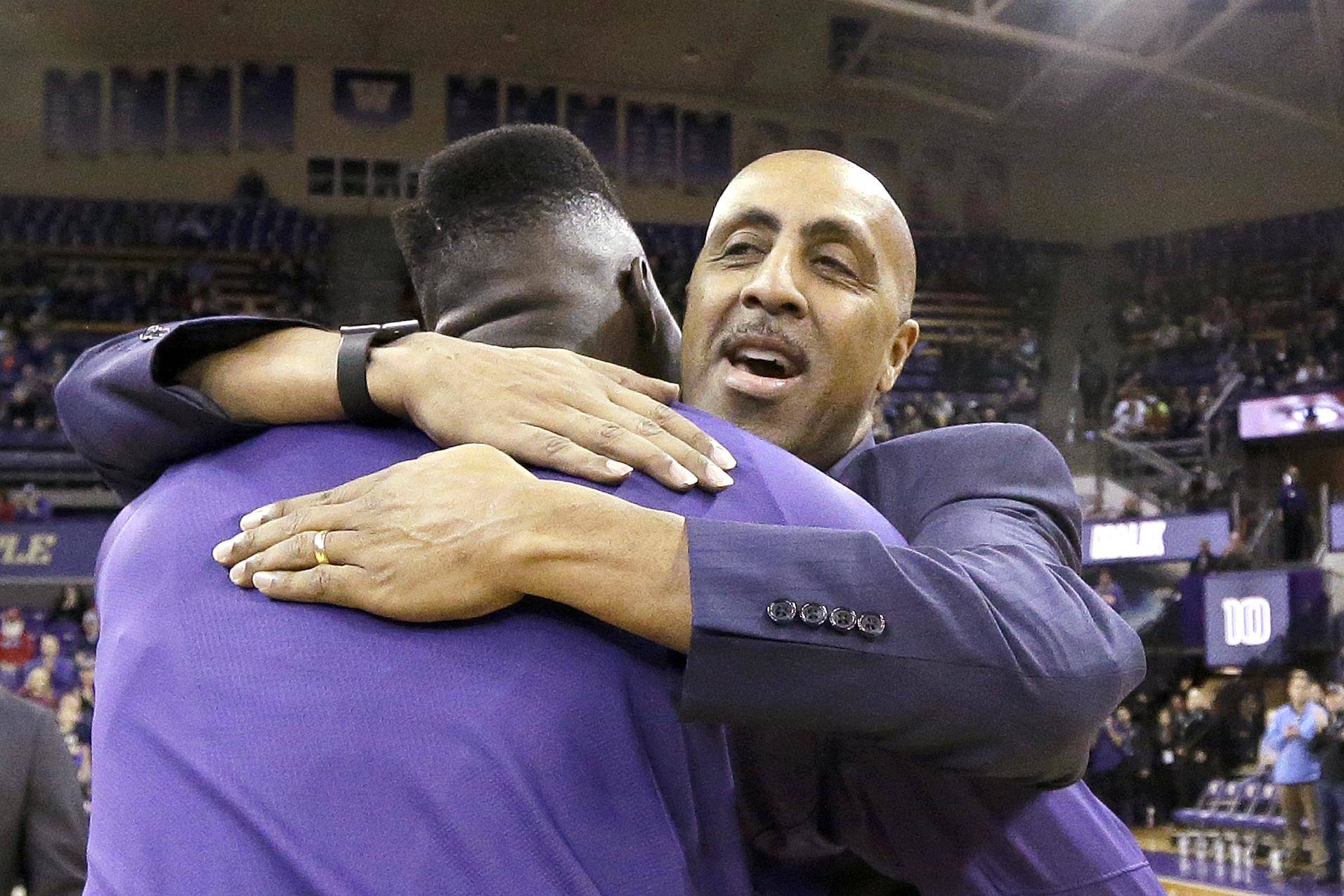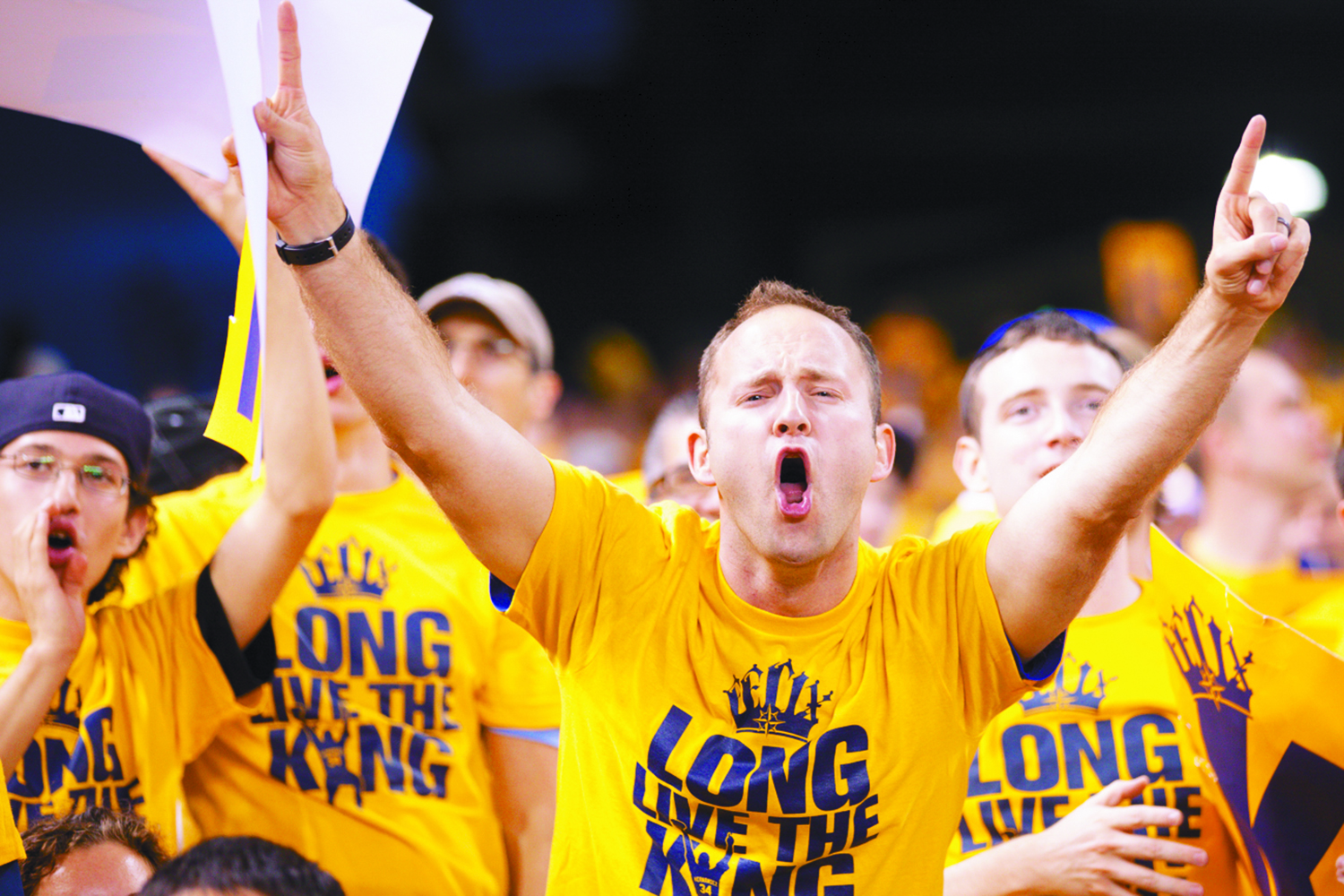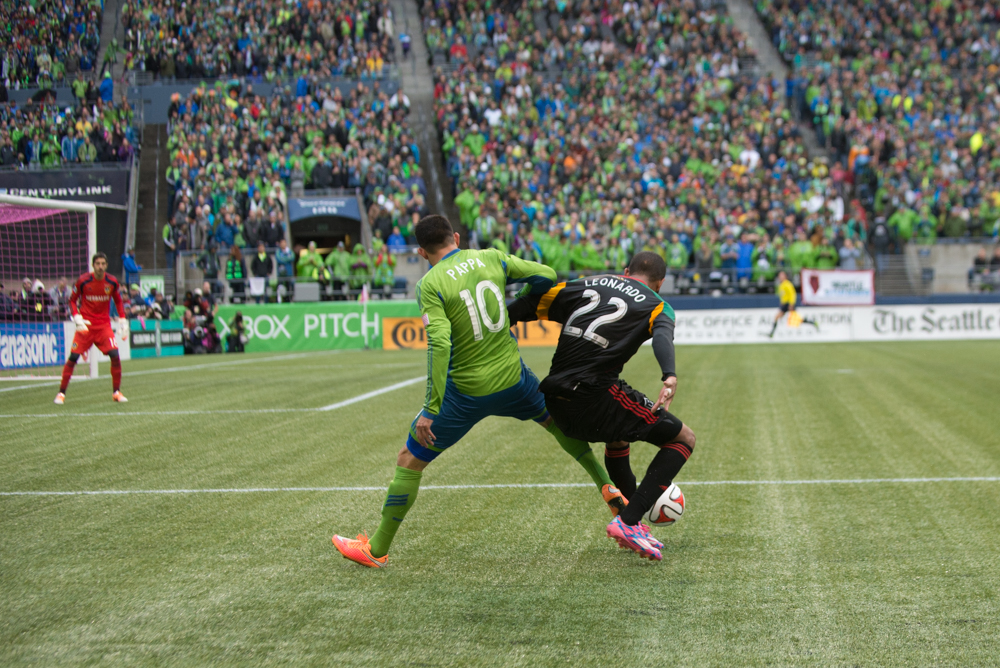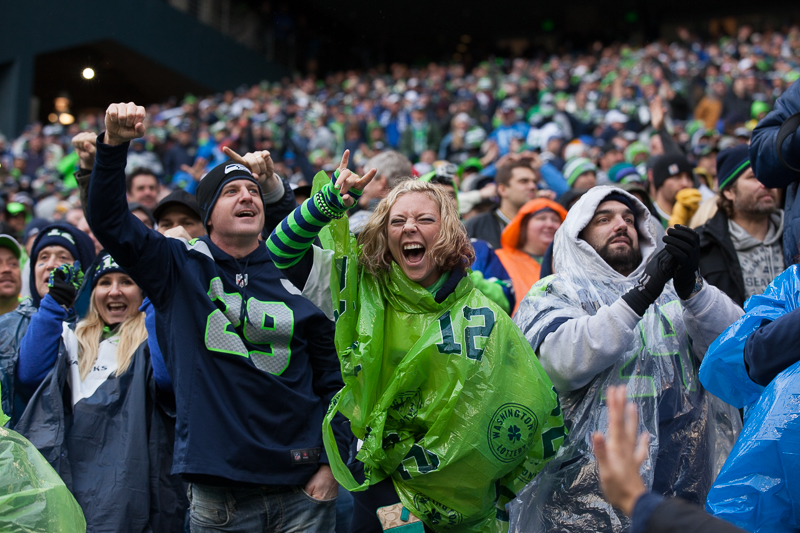It’s January 17, 2004 and Gill Coliseum at Oregon State University is half full.
Lorenzo Romar is in his second season as Washington’s men’s basketball coach, and it doesn’t look like he’ll see a third.
The Dawgs are 5 and 8—including a frustrating blowout loss to in-state rivals Gonzaga, and an 0 and 5 start to the conference season. With six minutes left, they’re down 16 points to mediocre Oregon State.
Then Husky sophomore guard Nate Robinson starts doing something strange. Rather than dribble the ball up the court at the start of every possession, a teammate inbounds the ball by rolling it to him. Robinson picks the ball up at midcourt, thus saving vital seconds the Huskies may need to complete a comeback. It seems futile at the time, but the Huskies do come back, winning the game in overtime. Robinson himself hits a game-tying shot with just half-a-second left in regulation.
Turns out he needed every second he could get. It was a theme of the season.
Washington would race through its remaining schedule, winning 13 of its final 16 games. The turnaround earned the Huskies one of the last at-large berths in the NCAA Tournament, ending a five-year drought.
Romar led the Huskies to five more NCAA tournaments, reaching three regional semifinals. He lasted 13 more years as Husky coach. But this afternoon, hours before the beginning of a sixth consecutive NCAA Tournament with no Husky representation, the coach who resuscitated the program is out. He’s also $3.2 million richer.
Few major college basketball coaches would remain employed after three or four years without a tournament appearance, let alone six. But Romar was unique, and, even now, with the team’s abysmal track record, his firing invites debate.
Until Romar, the University of Washington was a place coaching careers went to die. Under Romar, Husky fans worried our coach might leave for a job in the NBA.
Early on, Romar showed he was capable of teaching players to maximize their skills, especially guards. He sent Robinson—who had come to UW to play football—to the NBA. Brandon Roy was a lottery pick and NBA All-Star. Former walk-on Will Conroy graduated to a long professional career.
Romar was—is—an admirable human being. A devout Christian, he banned swearing at practice, but never forced his beliefs on players. A family man, he sent his youngest daughter to UW.
He was a tireless recruiter of local talent, no matter the consequences—I once saw him at a Garfield High School basketball game on Valentine’s Day, with his wife.
And he won, piling up accomplishments that were unthinkable under his predecessors. The year after his first tournament berth as UW coach, the Dawgs were back—this time, as a No. 1-overall seed. In 2009, he coached the Huskies to their first conference championship since the Eisenhower Administration. Romar sent 15 players to the NBA—in the 1990s, only two Husky players went on to NBA careers.
Michael Porter, Jr., likely would have been another of Romar’s NBA graduates. Porter had a much better 2016-2017 season, leading Nathan Hale High School—an institution with far less basketball success than even the pre-Romar Huskies—to an undefeated season. Porter moved to Seattle after Romar hired his father as an assistant coach. The clear, but unstated arrangement was that the Porters were a package deal.
Porter, Jr., a 6’9” forward with the ball-handling and shooting skills of a guard, is the nation’s top overall basketball recruit. He is nearly certain to be an NBA lottery pick after—we thought—a single season in Husky purple.
With Romar gone, the elder Porter has reportedly been hired as an assistant coach at Missouri. Rather than facing down UCLA and Arizona at Hec Ed, the younger Porter’s only appearance there will have been against West Seattle in the Metro League Tournament semifinals.
Coaches do not usually get fired after convincing a potential NBA No. 1 overall pick to join their program. But Romar also had a potential NBA No. 1 overall pick on this year’s team. Markelle Fultz chose Washington over Arizona, Kansas, and North Carolina.
This season, as it turned out, was a referendum on Romar. Could he finally get the Huskies into the tournament with a player of Fultz’ talent?
It’s January 18, 2017 and Hec Edmondson Pavilion at the University of Washington is half full.
Lorenzo Romar is in his fifteenth season as Washington’s men’s basketball coach, and it doesn’t look like he’ll see a sixteenth.
The Dawgs are 8 and 9—including a frustrating blowout loss to in-state rivals Gonzaga, and a 1 and 4 start to the conference season. Early in the second half, they’re down 17 points to a mediocre Colorado team.
Then they hand the ball to Markelle Fultz and everything gets better. Fultz scores 16 points in the second half, and 9 more in overtime as the Huskies win 85 to 83.
It was not a theme of the season. The Huskies lost their last 13 games—Fultz missing the last four with a knee injury. Romar, who has won more games than every Husky coach except the guy the arena is named after, leaves in the midst of the school’s worst-ever losing streak.
With Porter on the way, firing Romar isn’t logical. But with the Fultz era ending in infamy, and Porter sure to leave after just one season, University of Washington athletic director Jennifer Cohen had to ask this question: What is the post-Porter plan?
The answer seems to be uninspiring enough for the state-run university to pay Romar’s $3.2 million buyout—which for comparison is 18 times what Governor Jay Inslee makes.
Like many college football and basketball coaches, Romar was under contract well into the future—through 2020, same as UW football coach, Chris Peterson. These seemingly eternal contracts are common. Alabama’s football coach, Nick Saban, is under contract through 2022. Michigan’s football coach, Jim Harbaugh, is under contract through 2021, and the school just added $2 million to his salary via a complicated life insurance arrangement.
The contracts are meant to keep coaches from entertaining job offers from competing schools, or from the bottomless-pocketed owners of professional sports teams. UW, trying to keep pace, is reportedly negotiating a 10-year extension with Petersen.
The $3.2 million that the university must pay to Romar in the next 30 days is a big hit to the athletic budget. But with college sports being the playground for the wealthy that it is, it’s possible that a donor offered to defray the cost. This has happened elsewhere on a much larger scale—in 2015, LSU boosters were reportedly willing to pony up $15-20 million to buy out the contract of football coach Les Miles.
Collegiate athletic departments are not known for their transparency; we’ll likely never know where the $3.2 million came from, exactly.
We do know where it went—to one of Washington’s greatest coaches in any sport, and, from my own experience and every personal report I’ve ever heard, one of the nicest people in world history.
So I hope Lorenzo Romar enjoys that money. Maybe he can use it to give his wife a Valentine’s Day just a little bit more memorable than the one she spent at the Garfield gym.
news@seattleweekly.com








